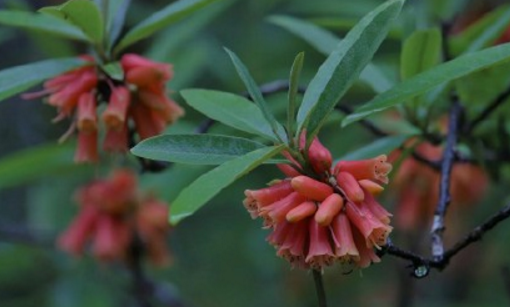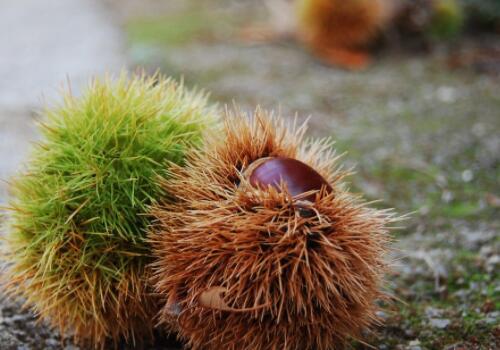How to plant the seeds of Pseudoacacia pseudoacacia in the subfamily Euphorbiaceae? What are the effects and effects? The difference between Cassia chinensis and Cassia bicolor?
Robinia pseudoacacia cassia is also known as Robinia pseudoacacia, Jinfeng tree, Sophora pseudoacacia, golden medicine tree, powder leaf cassia, so how to plant the seeds of Cassia pseudoacacia? What are the effects and effects? The difference between Cassia chinensis and Cassia bicolor? According to information, Cassia pseudoacacia is a plant that likes light, can tolerate semi-shade, likes high temperature and humid climate, and its growth rate is very fast. Huang Huai Cassia is relatively cold-resistant, like the soil with good drainage, but also like fertile.

First, how to plant the seeds of Huanghuai Cassia?
Sowing time
Every season, the fruit of Robinia pseudoacacia is ripe, the ripe fruit is grayish brown, it will not fall by itself, it will stay on the tree until you pick it, and you can pick it when you plant it. But autumn is more likely to mature and sprout. If it cannot be planted in time, it can be stored after drying in the shade.
Sowing method
1. Soak the mature seeds in warm water at 45 degrees Celsius. Soak them for 12 hours after the water becomes cold, and remove them for use.
2. The method of strip broadcasting can be adopted. Select soft and nutritious soil for repair, remove large blocks of stones and impurities, dig several drains, control the strip at about 25 centimeters, sow seeds and cover the soil for one centimeter. Water until the soil is drenched
3. the seeds began to sprout ten days after normal sowing, and all the seeds sprouted in 20 days at the latest.
Late maintenance
1. After the seedlings are unearthed, the pinnate leaves can be divided into seedlings when they are not fully extended, transfer the seedlings, and be careful not to hurt the roots.
2. In the six months after the emergence of the seedlings, thin fertilizer should be applied every month, such as urea, once a month, and can be planted after a year.
3. This kind of plant likes the environment of high temperature and humidity, and it will grow faster if it is exposed to sunlight, but the varieties that can prevent wind and sand are very adaptable, and they are not sensitive to sunlight, and the semi-overcast environment can also grow, but they can not resist the wind. Pay attention to the wind prevention in the seedling stage.
4. the requirements for fertility and water are not high, and the roadsides and barren mountains that grow in the middle and lower fertility can also survive after planting in the later stage. When it is maintained, it would rather be dry than accumulate too much water, because it can adapt to slightly dry ground, but too much water can lead to death. It's easier to grow at home.
Second, what is the effect and effect?
Sophora japonica has a very good medicinal value, the main medicinal part is its flowers, has the effect of clearing away heat and fire, used to moisturize the lungs is a very good choice, in addition, there is a hemostatic effect. It contains some factors that can improve the function of capillaries. In addition, Fructus Sophorae can also stop bleeding and reduce blood pressure.
Afforestation function
Cassia pseudoacacia, as a kind of green plant, has the function of purifying the air and reducing noise. In addition, the beauty of locust flowers can be used to decorate the courtyard and make our life more beautiful.
Appreciation value
The flower patterns and colors of Cassia pseudoacacia are very beautiful, as a sightseeing tree species, has a high ornamental value.
Third, the difference between Cassia chinensis and Cassia angustifolia.
Plant morphology is different.
1. Two-pod Cassia: belongs to a small tree, its branches are very luxuriant, generally start to have branches to propagate very close to the ground, and its branches are very small and grow very messy, generally without a trunk. Its bark is relatively smooth, and there are some fine pilose on the branches and leaves.
two。 Huang Huai Cassia: it belongs to an upright shrub, usually five to seven meters high. But its branches are hairless.
Growth habits are different.
1. Double pod Cassia: has a strong wind resistance, germination ability is particularly strong, the root system is very developed, suitable for growing in acid or latosol with appropriate fertility.
two。 Huang Huai Cassia Ming: not resistant to wind, and not resistant to stagnant water and depressions, its requirements for soil is not much, generally the same fertility of low and gentle slopes and both sides of the road can adapt to its growth.
The shape of flowers is different.
1. Two-pod Cassia: its flower contains ten stamens, of which seven are fertile, the remaining three degenerate and have no anthers. Of the seven fertile stamens, three are particularly large and taller than its petals, while the remaining four are shorter than their petals. Half of its flowering period is from October to November and the fruiting period is from November to March of the following year.
two。 Huang Huai Cassia: compared with the two-pod Cassia, all of its ten stamens are fertile. And the flowers of Huang Huai are relatively large, and the petals are bright yellow or dark yellow. The flowering period is longer and blossoms almost all the year round, with half of them concentrated from March to December.
Time: 2019-03-16 Click:
- Prev

The cultivation methods and matters needing attention of Rhododendron roseum? How do you breed? What is fancy language?
Tube rhododendron is a plant originating from high altitude, it likes to be cool, so what are the breeding methods and precautions of tube rhododendron? How do you breed? What is fancy language? According to the data, the rhododendron has a strong adaptability to the soil. It likes loose and fertile soil and is rich in humus.
- Next

When will the trees and chestnuts blossom and bear fruit and harvest? Where is it suitable for planting? What good varieties do you have? Can
Chinese chestnut tree is a tree up to 20 meters high, its fruit is known as the king of dried fruit, also known as chestnut, hairy chestnut, wind chestnut, chestnut, widely cultivated. When will the chestnut blossom and bear fruit and harvest? Where is it suitable for planting? What good varieties do you have? What kind of tree can be used for grafting? I learned from the termination base in Hubei.
Related
- Fuxing push coffee new agricultural production and marketing class: lack of small-scale processing plants
- Jujube rice field leisure farm deep ploughing Yilan for five years to create a space for organic food and play
- Nongyu Farm-A trial of organic papaya for brave women with advanced technology
- Four points for attention in the prevention and control of diseases and insect pests of edible fungi
- How to add nutrient solution to Edible Fungi
- Is there any good way to control edible fungus mites?
- Open Inoculation Technology of Edible Fungi
- Is there any clever way to use fertilizer for edible fungus in winter?
- What agents are used to kill the pathogens of edible fungi in the mushroom shed?
- Rapid drying of Edible Fungi

